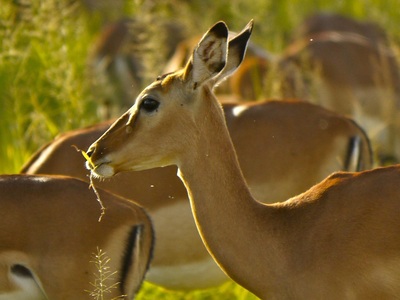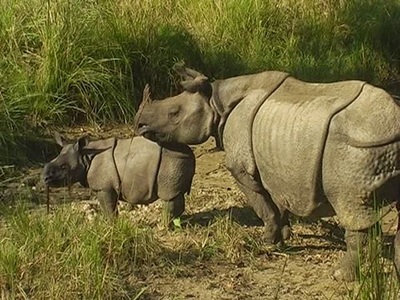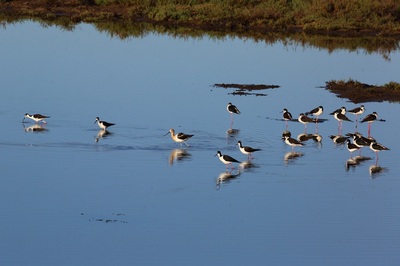Best time to take the tour planned by us.
The best time to visit is between November to May.
The parks remains open to public from November to June, though the months of May and June are a little too hot for comfort. While visiting the Park during winter you must remember to take woolen clothes as it can get pretty chilly,
particularly between December to February.
Best Time to Visit October to April.
ROYAL TOURS & TRAVELS
We specialize in Indo-Nepal Forest Safaris and Entertainment
Dudhwa - Bhira Road , PALIA Distt: Lakhimpur Kheri U.P. 262902
ENJOY THE WILD SAFARIS OF
DUDHWA NATIONAL PARK IN INDIA &
SHUKLAPHANTA SANCTUARY & BARDIA NATIONAL PARK IN NEPAL
with CASINO , Shopping & Tharu Tribal cultural shows in NEPAL.
VISIT DUDHWA NATIONAL PARK IN UP, INDIA
&
SHUKLA PHANTA SANCTUARY & BARDIA NATIONAL PARK of nearby borders of NEPAL,
The homes of Wild Tigers, Rhinos, Elephants, Deers , Antilopes and many more in Lush Green Towering Forests of finest Sal (Shorea robusta)Trees,Watching
thousands of migratory birds in the lakes deep inside the jungle gives the utmost pleasure of being with the nature. Dudwa National Park is a stronghold of the barasingha / swamp deer, which can be spotted in herds of hundreds. India is the only country where this species of deer is found.
It is interesting to note that around half of the total barasinghas on the Earth are present in Dudhwa National ParkBesides the above
mentioned animals, the avian life at dudhwain the marshland of Dudhwa National Park is home to around 400 species
of resident and migratory birds that include the swamp partridge, Bengal florican, great slaty Woodpecker
and many more.It is also to be noted that much of Dudhwa’s avian fauna is aquatic in nature and
found around the lakes. Come to Dudhwa and enjoy the roars of tigers ,
wallowing of rutting stags & chirping chorus of birds .
And above all, Entertain yourself with the CASINO , SHOPPING & THARU CULTURAL PROGRAMMES in NEPAL.
Wild Dudhwa & Wild
Dudhwa / Kishanpur & Wild Dudhwa, Kishanpur in India
Wild Dudhwa & Kishanpur in IndiaDUDHWA NATIONAL PARK IN INDIA &
SHUKLAPHANTA SANCTUARY & BARDIA NATIONAL PARK IN NEPAL
with CASINO , Shopping & Tharu Tribal cultural shows in NEPAL.
VISIT DUDHWA NATIONAL PARK IN UP, INDIA
&
SHUKLA PHANTA SANCTUARY & BARDIA NATIONAL PARK of nearby borders of NEPAL,
The homes of Wild Tigers, Rhinos, Elephants, Deers , Antilopes and many more in Lush Green Towering Forests of finest Sal (Shorea robusta)Trees,Watching
thousands of migratory birds in the lakes deep inside the jungle gives the utmost pleasure of being with the nature. Dudwa National Park is a stronghold of the barasingha / swamp deer, which can be spotted in herds of hundreds. India is the only country where this species of deer is found.
It is interesting to note that around half of the total barasinghas on the Earth are present in Dudhwa National ParkBesides the above
mentioned animals, the avian life at dudhwain the marshland of Dudhwa National Park is home to around 400 species
of resident and migratory birds that include the swamp partridge, Bengal florican, great slaty Woodpecker
and many more.It is also to be noted that much of Dudhwa’s avian fauna is aquatic in nature and
found around the lakes. Come to Dudhwa and enjoy the roars of tigers ,
wallowing of rutting stags & chirping chorus of birds .
And above all, Entertain yourself with the CASINO , SHOPPING & THARU CULTURAL PROGRAMMES in NEPAL.
Kishanpur Tour Nepal Darshan with Casino & Shukla phanta + Casino in Nepal Bardia National Park &
Casino in Nepal
Best time to take the tour planned by us.
The best time to visit is between November to May.
The parks remains open to public from November to June, though the months of May and June are a little too hot for comfort. While visiting the Park during winter you must remember to take woolen clothes as it can get pretty chilly,
particularly between December to February.
Best Time to Visit October to April.
We offer following tours to suit to length of your vacations :-
Wild Indian Jungle Safari Wild Safari & Cute Nepal Wild Indo-Nepal Safari & Cute Nepal Wild Indo-Nepal Safari Paradise
Rs.8990.00* for TWO Pax Rs.9900.00* for two Pax Rs.14990.00* For Two Pax Rs.16990.00* for Two Pax
Wild Indian Jungle Safari Wild Safari & Cute Nepal Wild Indo-Nepal Safari & Cute Nepal Wild Indo-Nepal Safari Paradise
Rs.8990.00* for TWO Pax Rs.9900.00* for two Pax Rs.14990.00* For Two Pax Rs.16990.00* for Two Pax
1 NIGHT & 2 DAYS 1 Night & 2 Days
2 Nights & 3 Days. 2 Nights & 3 Days
Contact : Royal Tours & Travels , Dudhwa - Bhira Road, PALIA KALAN. Distt : Lakhimpur Kheri U.P. 262902
E-Mail. : anupgupta1958@gmail.com. & dpmishra7@gmail.com
Mob. : 9838804691 & 9415166103
PAYMENT OPTIONS : Booking will be confirmed only after deposit of 100% of package cost in advance.
For payment you can Transfer Online or Deposit Cheque / Cash / DD in favor of “Anup Kumar Gupta”
Account No : 34030100000435. BANK OF BARODA, PALIA KALAN (KHERI) UP 262902 , (IFSC CODE:-BARB0PALIAK)
Cancellation Policy for all tariffs & packages:
Less than 7 days before the arrival date - no refund
Less than 7-15 days before the arrival date - 50% refund
Less than 15-30 days before the arrival date - 75% refund.
No refund in case of road block, accident, no show etc.* Tour includes all safaris & accommodation- all found for Two.
* Above rates are applicable for guests who come with their own vehicle or else 500.00 per head will be charged extra for movement
only in Kishanpur India. Vehicles shall be parked on Nepal border and a nepali vehicle shall be available for all movements in Nepal,
the charges of which are already included in the tariff.
* Picup & drop facility from Lucknow & Bareilly also available with us.
* Conditions apply.
Contact : Royal Tours & Travels , Dudhwa - Bhira Road, PALIA KALAN. Distt : Lakhimpur Kheri U.P. 262902
E-Mail. : anupgupta1958@gmail.com. & dpmishra7@gmail.com
Mob. : 9838804691 & 9415166103
PAYMENT OPTIONS : Booking will be confirmed only after deposit of 100% of package cost in advance.
For payment you can Transfer Online or Deposit Cheque / Cash / DD in favor of “Anup Kumar Gupta”
Account No : 34030100000435. BANK OF BARODA, PALIA KALAN (KHERI) UP 262902 , (IFSC CODE:-BARB0PALIAK)
Cancellation Policy for all tariffs & packages:
Less than 7 days before the arrival date - no refund
Less than 7-15 days before the arrival date - 50% refund
Less than 15-30 days before the arrival date - 75% refund.
No refund in case of road block, accident, no show etc.* Tour includes all safaris & accommodation- all found for Two.
* Above rates are applicable for guests who come with their own vehicle or else 500.00 per head will be charged extra for movement
only in Kishanpur India. Vehicles shall be parked on Nepal border and a nepali vehicle shall be available for all movements in Nepal,
the charges of which are already included in the tariff.
* Picup & drop facility from Lucknow & Bareilly also available with us.
* Conditions apply.
मै बहुत धैर्यवान हूँ, सच बोलना और सुनना पसंद है,





